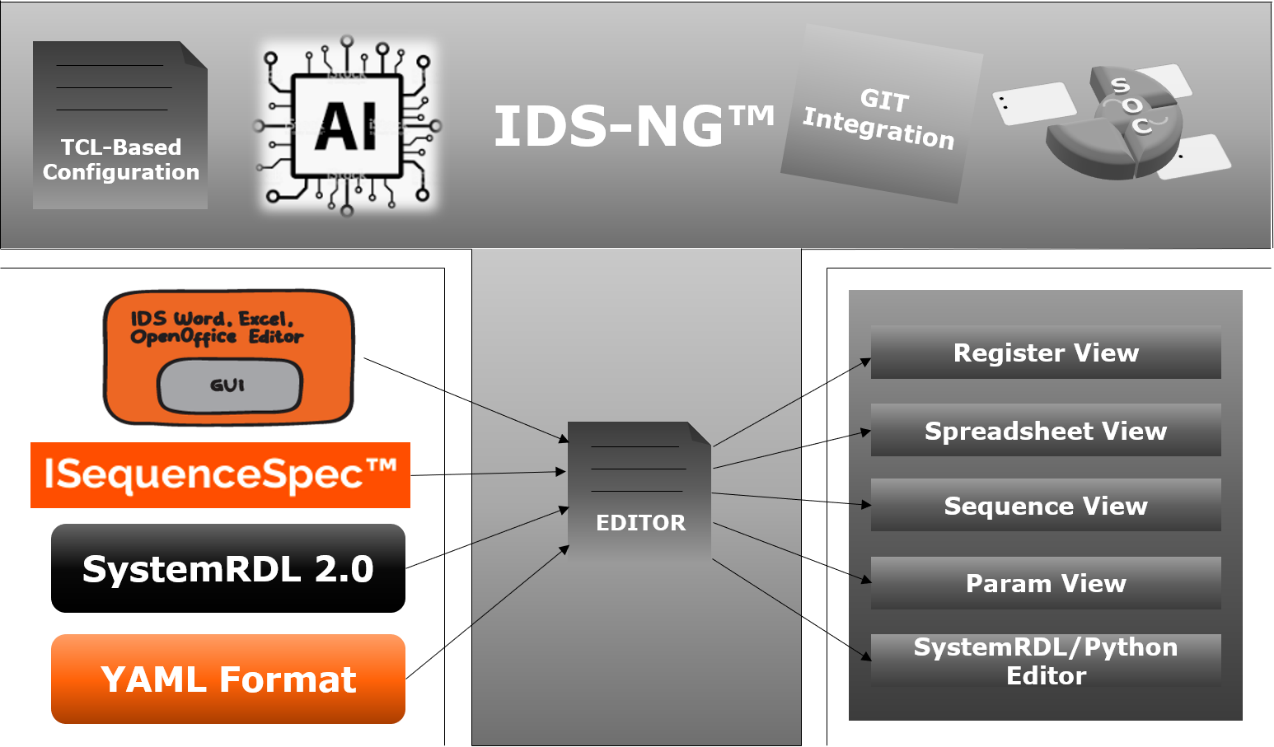
Agnisys Automation Review Anupam Bakshi
Anupam Bakshi is Chief Executive Officer (CEO) for Agnisys, Inc., the pioneer and industry leader in Golden Executable Specification Solutions™. From his early days at Gateway Design Automation, through to his time at Cadence, PictureTel, and Avid Technology, he has been passionate about … More » The Next Generation of Register, Sequence, and SoC AutomationAugust 28th, 2020 by Anupam Bakshi
Regular readers of this blog know that Agnisys started as the first company to fully automate the design, verification, and documentation of registers in chip designs. From a single specification, you can generate design RTL, UVM testbench models for simulation, and user documentation for the registers in your design. This saves your development teams weeks of time, especially when the design evolves and register changes can be propagated across the project with a specification update and the simple push of a button. IDesignSpec™ (IDS) remains our best-known and most widely adopted product. We expanded our solutions to include the sequences to access and program your registers with ISequenceSpec™ (ISS). We automatically generate sequences for various types of register behavior, including access to individual fields within registers. This is highly valuable for your chip verification team. We also help your driver and firmware developers by generating C code to access and program the registers in the actual fabricated chip as well as in hardware-software co-simulation and emulation. Like IDS, ISS also generates documentation in several formats. We extended our UVM support with the Automatic Register Verification (ARV™) add-on to IDS. ARV generates a complete verification environment for automatically verifying all your addressable registers across all access types. We create the complete UVM testbench: bus agents, monitors, drivers, adaptors, predictors, sequencers and sequences, and the verification plan. This testbench leverages the UVM register models generated by IDS. ARV also generates C code for driver development, interfaces with Portable Stimulus Standard (PSS) models, and supports formal verification. Most recently, we have added much more support for system-on-chip (SoC) design and verification. At the recent virtual Design Automation Conference (DAC), we announced SoC Enterprise™ (SoC-E), and the Standard Library of IP Generators (SLIP-G™). SoC-E gives you the technology to assemble a complete SoC design, integrating SLIP-G components, other forms of external IP, and your own design blocks. For standard buses such as AHB and APB, we generate RTL aggregators, bridges, and multiplexors as needed to meet the specified architecture for your SoC. With this background as context, I’d like to discuss the third product we announced at DAC, IDS NextGen™ (IDS-NG). In many ways, it ties together key aspects of our complete product line. IDS-NG is a specialized integrated development environment (IDE) for large IP blocks and SoCs. It includes a sophisticated GUI for capturing register and sequence specifications. It provides a common front end for IDS, ISS, ARV, and SoC-E. IDS-NG enables a fully automated design and verification flow for registers and sequences. IDS-NG supports a broad array of formats for input. It accepts register and sequence specifications created using the Microsoft Word, Microsoft Excel, and OpenOffice plug-ins for IDS and ISS. It can import your existing register specifications in the SystemRDL or IP-XACT standard, Register Allocation Framework (RALF) format, or the YAML human-readable data serialization language. You can also use the sophisticated built-in IDE editor to create your register and sequence specifications within IDS-NG. With our IDE’s power and ease of use, we expect that many users will choose this option.
We provide numerous ways to view, review, and edit your specification. For registers, we offer a domain-specific register view, a spreadsheet view for those who are used to Excel, a param view, and a SystemRDL editor. For sequences, we have a domain-specific view as well as a Python editor. We also have an integration with the widely used Git version-control system for tracking, managing, and even merging changes as your team edits the specifications. IDS-NG offers a huge range of output formats to support different users and different stages of your SoC project. For registers, these include: RTL design: Verilog/SystemVerilog, VHDL, and SystemC We regard IDS-NG as our new flagship product. It delivers on our longtime vision for a complete, fully automated, specification-based flow for registers and sequences from specification to assembly, design, verification, and validation of complex SoC devices. From a single specification, you can generate design RTL, complex programming and test sequences, UVM testbench models for simulation, PSS models, assertions for formal verification, C code for firmware and device driver development, CSV files for ATE, and user documentation in multiple formats. Our solution increases the productivity, efficiency, and work quality of your individual engineers and project teams, while eliminating many forms of system design and verification errors. Please view our recent webinar to learn more. Tags: SystemRDL |
|
|
|||||
|
|
|||||
|
|||||







